Resultats de la cerca122 resultats
-

More Aware, More Protected: Do Road Safety Skills Predict the use of Passive Safety Elements among Teenagers
Sergio Useche, Francisco Alonso, Luis Montoro, Leandro Garrigós.
(2019). ArticleBMJ Open. Num.9:e035007
Objective This study had two objectives: first, to test the effects of sociodemographic variables, and the effects of three key road safety skills (knowledge–risk perception–attitudes) on the use of passive safety elements (PSEs) among teenagers; and second, to assess the differential impact of the study variables on PSEs use from a gender-based perspective. Setting and participants This cross-sectional study was framed in the paradigm of primary care, and it involved students from several educational centres in Spain. A sample of 827 Spanish teenagers (52.4% females and 47.6% males) with a mean age of M=14.41–7 (12–19) years was used. Results Through SEM modelling, we found that the use...
Objective This study had two objectives: first, to test the effects of sociodemographic variables, and the effects of three key road safety skills (knowledge–risk perception–attitudes) on the use of passive safety elements (PSEs) among teenagers; and second, to assess the differential impact of the study variables on PSEs use from a gender-based perspective. Setting and participants This cross-sectional study was framed in the paradigm of primary care, and it involved students from several educational centres in Spain. A sample of 827 Spanish teenagers (52.4% females and 47.6% males) with a mean age of M=14.41–7 (12–19) years was used. Results Through SEM modelling, we found that the use of PSEs is largely explained by psychosocial variables through the mediation of three road safety skills: risk perception (β=0.103***), rule knowledge (β=0.095*) and attitudes towards road safety (β=0.186***). Furthermore, multigroup analyses showed that, although most variables explain the use of PSEs among teenagers in a similar way, key gender-based differences exist in this regard. Conclusions Road safety skills have a significant effect on the use of PSEs among Spanish teenagers, and gender explains some differences in the mechanisms which predict them. Also, in the study we discuss the need for strengthening school-based interventions aimed at helping this vulnerable group of road users acquire and develop positive behavioural competences.
Llegir més Ocultar DOI: 10.1136/bmjopen-2019-035007ISSN: 2044-6055 -
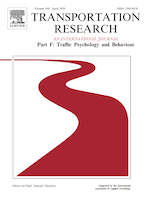
Validation of the Multidimensional Driving Style Inventory (MDSI) in Professional Drivers: How does it work in transportation workers?
Sergio Useche, Boris Cendales, Francisco Alonso, Juan C. Pastor, Luis Montoro
(2019). ArticleTransportation Research Part F: Traffic Psychology and Behaviour. Num.67:155-163
The Multidimensional Driving Style Inventory or MDSI constitutes, perhaps, the most relevant tool for measuring driving styles. Since its releasing in 2004, it has been applied worldwide to different samples of drivers, showing an important value and utility for road safety. However, empirical studies using the MDSI on professional drivers are scarce and, to the date, there is no validated version of the instrument in this workforce yet. Objectives: This study had two aims. First, to describe in detail the validation of the Taubman-Ben-Ari’s MDSI among professional drivers and, second, to test its convergent validity with other key relevant factors present in the work environment of this...
The Multidimensional Driving Style Inventory or MDSI constitutes, perhaps, the most relevant tool for measuring driving styles. Since its releasing in 2004, it has been applied worldwide to different samples of drivers, showing an important value and utility for road safety. However, empirical studies using the MDSI on professional drivers are scarce and, to the date, there is no validated version of the instrument in this workforce yet. Objectives: This study had two aims. First, to describe in detail the validation of the Taubman-Ben-Ari’s MDSI among professional drivers and, second, to test its convergent validity with other key relevant factors present in the work environment of this particular population: driving anger, job strain and occupational driving crashes. Method: The data used for this validation was gathered from a representative sample of 752 Colombian professional drivers and analyzed by means of competitive Confirmatory Factor Analyses (CFAs), assessing psychometric properties and obtaining an optimized structure for the instrument applied to active transportation workers. Results: The outcomes of this study suggest a clear factorial structure, adequate model fit, factorial weights, reliability and internal consistency, keeping the re-evaluated four-factor structure of the questionnaire: Reckless & Careless (F1); Anxious (F2); Angry & Hostile (F3); and Patient & Careful (F4). Conclusion: This applied research supports the hypothesis that the validated version of MDSI in professional drivers, together with further measures applied to other work environment factors, may play a relevant role in the improvement of driving safety and injury prevention for this vulnerable workforce from the perspective of occupational research in transportation.
Llegir més Ocultar DOI: 10.1016/j.trf.2019.10.012ISSN: 1369-8478 -
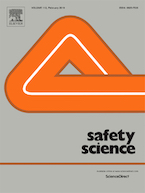
Perceived safety and attributed value as predictors of the intention to use autonomous vehicles: A national study with Spanish drivers
Luis Montoro, Sergio Useche, Francisco Alonso, Ignacio Lijarcio, Patricia Bosó-Seguí, Ana Martí-Belda
(2019). ArticleSafety Science. Num.120:865-876
Sooner than later, the growing development of Autonomous Vehicles (AVs) will represent not only an imminent transformation of transportation dynamics, but also further advantages for their users, including many improvements in road crash prevention, efficiency and sustainability. However, different concerns and constraints may affect the intention of adopting this technology among its potential customers, especially for what concerns those constraints related to safety, viability and stability. The objective of this study was to examine the influence of perceived safety and value attributed to the AV in the drivers’ intention to use it, considering the drivers’ demographic factors, driving...
Sooner than later, the growing development of Autonomous Vehicles (AVs) will represent not only an imminent transformation of transportation dynamics, but also further advantages for their users, including many improvements in road crash prevention, efficiency and sustainability. However, different concerns and constraints may affect the intention of adopting this technology among its potential customers, especially for what concerns those constraints related to safety, viability and stability. The objective of this study was to examine the influence of perceived safety and value attributed to the AV in the drivers’ intention to use it, considering the drivers’ demographic factors, driving habits, interaction with information technologies and self-reported safety records (using conventional vehicles) as potential predictors. For this cross-sectional study, data from 1205 drivers of conventional vehicles were analyzed through a structural equation modeling (SEM) approach. The intention to use autonomous vehicles could be predicted through demographic and driving-related factors, as well as by the level of interaction of individuals with information and communication technologies (ITCs). It was also found that the perceived safety of AVs and their attributed value for transport and road safety mediate the associations between drivers’ features and the final intention of using (or not) autonomous vehicles. The results of this study suggest that perceived safety and the value attributed to AVs significantly influence the intention of adopting it. In other words, a deeper emphasis on the safety, causality prevention and efficiency-related benefits may strengthen the acceptance of this new technology and enhance its progressive inclusion in transport dynamics among drivers.
Llegir més Ocultar DOI: 10.1016/j.ssci.2019.07.041ISSN: 0925-7535 -

Well-being, behavioral patterns and cycling crashes of different age groups in Latin America: Are aging adults the safest cyclists?
Sergio Useche, Francisco Alonso, Jaime Sanmartín, Luis Montoro, Boris Cendales
(2019). ArticlePLoS ONE. Num.14(8): e0221864
Objectives This study aimed at analyzing the cycling safety-related factors and the mental health indicators of elderly cyclists in comparison with other age groups. Methods For this cross-sectional study, we analyzed the data of 911 bicyclists from two Latin American countries that have been experiencing a substantial growth of urban cycling during the last few years: Colombia and Argentina. Participants responded to an e-questionnaire on bicycling behaviors, mental health and cycling safety. Results Aging adults reported lower rates of risky behaviors and traffic crashes (around .38 in five years), and, on the other hand, more cycling protective behaviors, a higher risk perception...
Objectives This study aimed at analyzing the cycling safety-related factors and the mental health indicators of elderly cyclists in comparison with other age groups. Methods For this cross-sectional study, we analyzed the data of 911 bicyclists from two Latin American countries that have been experiencing a substantial growth of urban cycling during the last few years: Colombia and Argentina. Participants responded to an e-questionnaire on bicycling behaviors, mental health and cycling safety. Results Aging adults reported lower rates of risky behaviors and traffic crashes (around .38 in five years), and, on the other hand, more cycling protective behaviors, a higher risk perception and a better knowledge of traffic norms than both other adults (26–50 years old) and young cyclists (<26). Cycling behaviors and crashes were found to be significantly related to mental health indicators, the latter being higher in aging cyclists. However, this population remains more prone to distractions experienced while cycling than other age groups. Conclusions Although the behavioral features of aging adults were comparatively “safer” than the ones displayed by other age groups, factors such as cycling distractions and this population’s over-representation in traffic crashes suggest the need of enforcing policymaking for a better integration of this age segment in alternative transportation dynamics.
Llegir més Ocultar DOI: 10.1371/journal.pone.0221864ISSN: 1932-6203 -
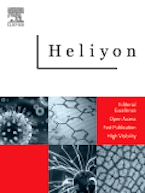
Trait driving anger and driving styles among Colombian professional drivers
Sergio Useche, Boris Cendales, Francisco Alonso, Luis Montoro, Juan C. Pastor
(2019). ArticleHeliyon. Num.5(8): e02259
This study analyzes the association between trait driving anger and driving styles in a sample of Colombian professional drivers. Additionally, the internal and external validity of the Deffenbacher's Driving Anger Scale (DAS-14) was examined in the study population. The DAS-14 and the Spanish Version of the Multidimensional Driving Style Inventory (S-MDSI) were administered to 492 urban bus and taxi operators. Average trait driving anger scores in the study population were similar to those reported in previous validation studies from Spain, Argentina, China, and Malaysia. After deleting three cross-loaded items, confirmatory factor analyses revealed a three-dimensional latent structure for...
This study analyzes the association between trait driving anger and driving styles in a sample of Colombian professional drivers. Additionally, the internal and external validity of the Deffenbacher's Driving Anger Scale (DAS-14) was examined in the study population. The DAS-14 and the Spanish Version of the Multidimensional Driving Style Inventory (S-MDSI) were administered to 492 urban bus and taxi operators. Average trait driving anger scores in the study population were similar to those reported in previous validation studies from Spain, Argentina, China, and Malaysia. After deleting three cross-loaded items, confirmatory factor analyses revealed a three-dimensional latent structure for the DAS-14, similar but not equal to the previous Spanish speaking validations. This factorial structure fits the data reasonably well. Finally, linear regression analyses revealed that the three factors of the DAS-14 (impeded progress by others, illegal driving, and direct hostility) significantly predict adaptive and maladaptive driving styles. Overall, the results of this study suggest that the DAS-14 is a reasonably reliable measure of driving anger traits among professional drivers, and it also provides relevant insights for the prevention of risky driving styles in this occupational group.
Llegir més Ocultar DOI: 10.1016/j.heliyon.2019.e02259ISSN: 2405-8440 -

Psychosocial Work Factors, Job Stress and Strain at the Wheel: Validation of the Copenhagen Psychosocial Questionnaire (COPSOQ) in Professional Drivers
Sergio Useche, Luis Montoro, Francisco Alonso, Juan C. Pastor
(2019). ArticleFrontiers in Psychology. Num.10:1531
Introduction: Psychosocial work environment has been related to many negative health outcomes in different workforces. However, evidence in this regard is still limited in the case of transport workers, and most of the tools used in research, often excessively generic, do not fully consider the specific key stressors, and adverse issues present in the psychosocial environment of professional driving. Objective: Thus, the purpose of this study was to obtain a complete description of the validation of measurement applied to psychosocial factors at work in professional drivers, using the Enterprise version (2018) of COPSOQ-III. Methods: The data was collected from 726 Spanish professional...
Introduction: Psychosocial work environment has been related to many negative health outcomes in different workforces. However, evidence in this regard is still limited in the case of transport workers, and most of the tools used in research, often excessively generic, do not fully consider the specific key stressors, and adverse issues present in the psychosocial environment of professional driving. Objective: Thus, the purpose of this study was to obtain a complete description of the validation of measurement applied to psychosocial factors at work in professional drivers, using the Enterprise version (2018) of COPSOQ-III. Methods: The data was collected from 726 Spanish professional drivers, and the analyses were conducted using the competitive Confirmatory Factor Analysis or CFA, obtaining basic psychometric properties and an optimized structure for the instrument applied to active transport workers. Results: The results suggest a clear factorial structure, high factorial weights, internal consistency, and an improved adjustment to the psychosocial conditions of this group, excluding a set of items with low psychometrical adjustment and keeping the five-factor structure of the questionnaire: demands, influence and development, interpersonal relationships and leadership, job insecurity, and strain-effects and outcomes. Conclusion: Overall, what was found in this study supports the hypothesis that the validated version of COPSOQ in professional drivers, together with complementary information sources specific for their work environment, may have a relevant research value and some important practical implications for the improvement of the occupational safety, and health within the typically vulnerable industry of transportation.
Llegir més Ocultar DOI: 10.3389/fpsyg.2019.01531ISSN: 1664-1078 -
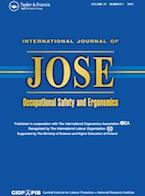
Commuting Accidents of Spanish Professional Drivers: When Occupational Risk Exceeds the Workplace
Javier Llamazares, Sergio Useche, Luis Montoro, Francisco Alonso
(2019). ArticleInternational Journal of Occupational Safety and Ergonomics.
Background. Work traffic accidents are an issue both in Spain and all over the world, and specific evidence on commuting accidents is scarce. Even though both industrial safety and welfare have been improved during the last decades, the commuting accidents rate is growing worldwide. Purpose. The aim of this study was to examine and describe the characteristics of commuting traffic crashes of Spanish professional drivers. Materials and methods. For this cross-sectional study, commuting accidents suffered by drivers during the last 12 years were analyzed. Crossed and heatmap-based analyses were performed in order to establish patterns and driver-based differences among commuting crashes....
Background. Work traffic accidents are an issue both in Spain and all over the world, and specific evidence on commuting accidents is scarce. Even though both industrial safety and welfare have been improved during the last decades, the commuting accidents rate is growing worldwide. Purpose. The aim of this study was to examine and describe the characteristics of commuting traffic crashes of Spanish professional drivers. Materials and methods. For this cross-sectional study, commuting accidents suffered by drivers during the last 12 years were analyzed. Crossed and heatmap-based analyses were performed in order to establish patterns and driver-based differences among commuting crashes. Results. Commuting crashes’ features were found to be associated with demographic and job-related variables of professional drivers. Drivers’ gender, time slots (peak/off-peak hours) and the specific hour of the event explained different trends in accident severity and characteristics. Conclusions. The results of this study suggest that commuting accidents involving professional drivers differ in demographic and situational issues from general and on-duty professional drivers’ traffic crashes. Also, since in Spain commuting crashes are occupational accidents, more numerous and better actions should be taken in this regard, especially considering the association of professional drivers’ accidents with fatigue and shift-working.
Llegir més Ocultar DOI: 10.1080/10803548.2019.1619993ISSN: 1080-3548 -

Healthy but risky: A descriptive study on cyclists’ encouraging and discouraging factors for using bicycles, habits and safety outcomes.
Sergio Useche, Luis Montoro, Jaime Sanmartin, Francisco Alonso.
(2019). ArticleTransportation Research Part F. Num.62:587-598
Transportation is a necessary process that requires not only adequate means, but also indi- vidual choices. And apparently, the recent boom of alternative modes of transportation has substantially changed people’s perceptions of cycling, as well as the reasons why they decide to use a bike. Nevertheless, people identify some motives that encourage this use together with the perceived risks and the discouraging factors which affect the choice of using a bike, thus making it important to explore all these elements in the light of the empirical evidence. The objective of this study was to explore and describe the encouraging and discouraging reasons behind the use of bikes among cyclists,...
Transportation is a necessary process that requires not only adequate means, but also indi- vidual choices. And apparently, the recent boom of alternative modes of transportation has substantially changed people’s perceptions of cycling, as well as the reasons why they decide to use a bike. Nevertheless, people identify some motives that encourage this use together with the perceived risks and the discouraging factors which affect the choice of using a bike, thus making it important to explore all these elements in the light of the empirical evidence. The objective of this study was to explore and describe the encouraging and discouraging reasons behind the use of bikes among cyclists, together with the reasons behind their journeys and the relationship of these elements with their crash history. For this study, 1064 cyclists were asked to complete an electronic survey which gathered information on their cycling-related habits, perceptions and motives. The results show that physical health and fitness (38%), contribution to environmental sustainability (14%), econ- omy (13%) and time saving (10%) were the most frequent factors which encouraged cycling. On the other hand, perceived crash risk (17%), adverse weather conditions (17%) and lack of safety (16%) were found to be the most relevant discouraging factors. Finally, participants who cycled with more regularity were found to be less prone to suffer cycling crashes. The findings of this study support that cycling is a choice based on both benefits and risks, and its perceived connection to health is highly prevalent among active cyclists. Furthermore, perceived risks which may discourage cycling are an issue that needs to be addressed by transport policies, in order to enhance the engagement of the population in this mode of transportation. Also, this study highlights the need to strengthen utility cycling (cycling for transport to and from places) as a way to integrate transportation within healthier practices and habits.
Llegir més Ocultar DOI: 10.1016/j.trf.2019.02.014ISSN: 1369-8478 -
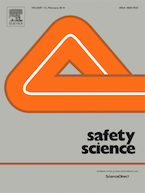
Explaining self-reported traffic crashes of cyclists: An empirical study based on age and road risky behaviors
Sergio Useche, Francisco Alonso, Luis Montoro, Cristina Esteban.
(2019). ArticleSafety Science. Num.113:105-114
The growing rates of traffic crashes involving cyclists are currently recognized as a major public health and road safety concern. Furthermore, risky behaviors on the road and their precedent factors have been conceptualized as potential determinants for explaining, intervening and preventing traffic injuries of cyclists. Objectives: This study aimed at examining whether individual factors and self-reported risky behaviors could explain the crash rates of cyclists in a period of 5 years. Methods: A sample of 1064 cyclists was used, with a mean age of 32.83 years. Participants answered a survey assessing demographic data and information on risky behaviors, risk perception, knowledge of...
The growing rates of traffic crashes involving cyclists are currently recognized as a major public health and road safety concern. Furthermore, risky behaviors on the road and their precedent factors have been conceptualized as potential determinants for explaining, intervening and preventing traffic injuries of cyclists. Objectives: This study aimed at examining whether individual factors and self-reported risky behaviors could explain the crash rates of cyclists in a period of 5 years. Methods: A sample of 1064 cyclists was used, with a mean age of 32.83 years. Participants answered a survey assessing demographic data and information on risky behaviors, risk perception, knowledge of norms, and suffered cycling crashes. Results: Using Structural Equation Models, it was found that crash rates in cyclists could be explained through risky behaviors, risk perception, knowledge of traffic norms and cycling intensity. Through a multi-group path model differentiating cyclists by age group, it was also found that cycling intensity has a differential impact on self-reported crashes in older (age > 25) and younger (age<=25) cyclists. Conclusions: This study suggests that risky behaviors mediate the relationship between the individual factors and the crash rates of cyclists, and that age exerts an important effect in the variation of the explanatory structure of the model. The design of educational tools would be useful for promoting not only the avoidance of risky behaviors, but also a generalized awareness on road safety issues. Practical applications: This research provides an empirical precedent in the study of the impact of factors related to risky behaviors on the road and to safety outcomes of cyclists.
Llegir més Ocultar DOI: 10.1016/j.ssci.2018.11.021ISSN: 0925-7535 -

When age means safety: Data to assess trends and differences on rule knowledge, risk perception, aberrant and positive road behaviors, and traffic crashes of cyclists.
Sergio Useche, Francisco Alonso, Luis Montoro, José M. Tomas
(2019). ArticleData in Brief. Num.22:627-634
This data article examines the association between age, knowledge of traffic rules, risk perception, risky and positive behaviors on the road and traffic safety outcomes of cyclists. The data was collected using a structured self-administrable and online-based ques- tionnaire, applied to a full sample of 1064 cyclists. The data con- tains 4 parts: descriptive statistics; graphical trends for each study variable according to age; Post-Hoc (Tukey-HSD) comparisons between cyclists classified in the different age groups; and, finally, the dataset for further explorations in this regard. For further information, it is convenient to read the full article entitled “Explaining Self-Reported Traffic...
This data article examines the association between age, knowledge of traffic rules, risk perception, risky and positive behaviors on the road and traffic safety outcomes of cyclists. The data was collected using a structured self-administrable and online-based ques- tionnaire, applied to a full sample of 1064 cyclists. The data con- tains 4 parts: descriptive statistics; graphical trends for each study variable according to age; Post-Hoc (Tukey-HSD) comparisons between cyclists classified in the different age groups; and, finally, the dataset for further explorations in this regard. For further information, it is convenient to read the full article entitled “Explaining Self-Reported Traffic Crashes of Cyclists: An Empirical Study based on Age and Road Risky Behaviors” (Useche et al., 2019) [1].
Llegir més Ocultar DOI: 10.1016/j.dib.2018.12.066ISSN: 2352-3409









